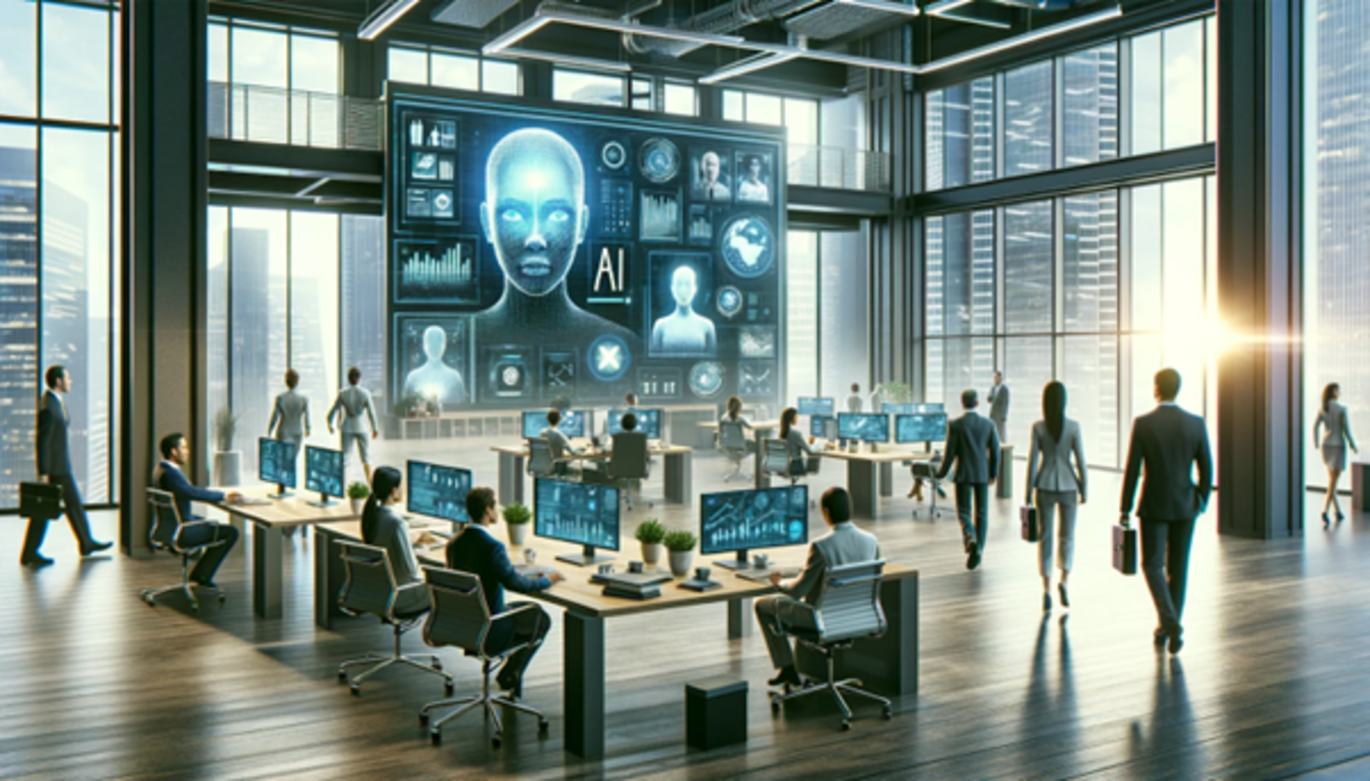Creativity in the age of generative AI: a new era of creative partnerships
Generative AI (e.g., ChatGPT) has propelled AI into the mainstream, raising concerns about job displacement and creative work. In a Nature Human Behavior position paper, AIAS fellow Janet Rafner and co-authors emphasize a need to focus on ‘co-creativity,’ the human-AI interaction instead.

In a new paper in a Nature Human Behavior special issue on AI, researcher Janet Rafner from Aarhus Institute of Advanced Studies and Center for Hybrid Intelligence at Aarhus University and Prof. Jacob Sherson, Director of the Center for Hybrid Intelligence, together with international collaborators discuss research and societal implications of creativity and artificial intelligence (AI).
Recent advancements in generative AI have showcased its potential in a wide range of creative activities such as to produce works of art, compose symphonies, and even draft legal texts, slide presentations or the like. These developments have raised concerns that AI will outperform humans in creativity tasks and make knowledge workers redundant. These comments are most recently underlined by a Fortune article entitled ‘Elon Musk says AI will create a future where ‘no job is needed’: ‘The AI will be able to do everything’. In contrast, corresponding author Jacob Sherson puts it: “Autonomous AI will certainly continue to astound us. However, such technologies in the hands of business professionals and other experts will offer endless avenues of innovative potential, so there is not going to be a shortage of jobs.”
Understanding and nurturing co-creativity: human-machine interaction
The team of researchers argues that we should direct our attention to understanding and nurturing co-creativity, the interaction between humans and machines towards what is termed a ‘human-centered AI’ and ‘hybrid intelligence.’ In this way, we will be able to develop interfaces that at the same time ensure both high degrees of automatization through AI and human control and hereby supporting a relationship that optimally empower each other.
Rafner comments: To date, most studies on human-AI co-creativity come from the field of human-computer interaction and focus on the abilities of the AI, and the interaction design and dynamics. While these advances are key for understanding the dynamics between humans and algorithms and human attitudes towards the co-creative process and product, there is an urgent need to enrich these applications with the insights about creativity obtained over the past decades in the psychological sciences.
“Right now, we need to move the conversation away from questions like Can AI be creative? One reason for this is that defining creativity is not cut and dry. When investigating human only, machine only, and human-AI co-creativity, we need to consider the type and level of creativity under question, from everyday creative activities (e.g. making new recipes, artwork or music) that are perhaps more amenable to machine automatization to paradigm-shifting contributions that may require higher-level human intervention. Additionally, it is much more meaningful to consider nuanced questions like, What are the similarities and differences in human cognition, behavior, motivation and self-efficacy between human-AI co-creativity and human creativity?” explains Rafner.
Currently, we do not have sufficient knowledge of co-creativity between human-machines as the delineation between human and AI contributions (and processes) are not always clear. Looking ahead, researchers should balance predictive accuracy with theoretical understanding (i.e., explainability), towards the goal of developing intelligent systems to both measure and enhance human creativity.
When designing co-creative systems such as virtual assistants, it will be essential to balance psychometric rigor with ecological validity. That is, co-creativity tasks should combine precise psychological measurement with state-of-the-art intuitive and engaging interface design.
Interdisciplinary collaborations are needed
The challenge of understanding and properly developing human-AI co-creative systems is not to be faced by a single discipline. Business and management scholars should be included to ensure that tasks sufficiently capture real-world professional challenges and to understand the implications of co-creativity for the future of work at macro and micro organizational scales, such as creativity in team dynamics with blended teams of humans and AI. Linguistics and learning scientists are needed to help us understand the impact and nuances of prompt engineering in text-to-x systems. Developmental psychologists will have to study the impact on human learning processes.
Ethical and meaningful developments
Is not only seen as more ethical to keep humans closely in-the-loop when working and developing AI, but also in most cases it is the most efficient long-term choice, the team of researchers argue.
Beyond this, ethics and legal scholars will have to consider the costs and benefits of co-creativity in terms of intellectual property rights, human sense of purpose, and environmental impact.
Access the full scientific paper
A position paper in Nature Human Behavior in their special issue on AI:
‘Creativity in the age of generative AI’ by Rafner, J., Beaty, R., Kaufman, J.C., Lubart, T., J., Sherson in: Nature Human Behaviour, 20 November 2023:
https://www.nature.com/articles/s41562-023-01751-1
DOI: 10.1038/s41562-023-01751-1
Contacts
For inquiries regarding Human-AI co-creativity research and societal implications:
Janet Rafner, AIAS SHAPE Fellow and Postdoc, J Director of the Center for Hybrid Intelligence
Email: janetrafner@mgmt.au.dk
Aarhus Institute of Advanced Studies &
Center for Hybrid Intelligence,
Department of Management,
School of Business and Social Science,
Aarhus University,
Denmark
For inquiries regarding Hybrid Intelligence and Human-AI co-creativity and the future of work and comments in Danish:
Prof. Jacob Sherson, Founder and Director of the Center for Hybrid Intelligence
Email: sherson@mgmt.au.dk
Center for Hybrid Intelligence,
Department of Management,
School of Business and Social Science,
Aarhus University,
Denmark
